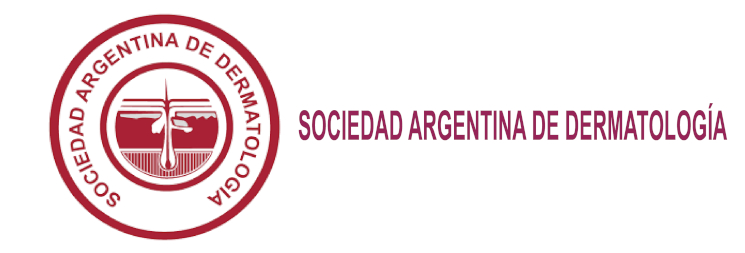Xantogranuloma juvenil: experiencia en un hospital pediátrico
Resumen
Introducción. El xantogranuloma juvenil (XGJ) es una histiocitosis de células no Langerhans, de curso benigno y autolimitado, que afecta principalmente a lactantes y niños. Los pacientes pueden presentar compromiso extracutáneo, y las localizaciones más frecuentes son ojos, hígado, pulmón y SNC.Objetivos.
1) Conocer las características clínicas de los pacientes con
XGJ evaluados en el Servicio de Dermatología del Hospital de Pediatría “Prof. Dr. Juan P. Garrahan”.
2) Describir las enfermedades asociadas y las posibles complicaciones.
3) Conocer la evolución de los pacientes.
Materiales y métodos. Se realizó un trabajo retrospectivo, observacional y longitudinal, en el que se estudiaron todos los pacientes con diagnóstico clínico e histopatológico de XGJ desde agosto de 1988 hasta diciembre de 2006.
Resultados. Presentaron diagnóstico clínico de XGJ 86 pacientes, se obtuvo la confirmación histológica en 45 de ellos y se excluyó a los 41 pacientes restantes. En el 67% la enfermedad comenzó dentro del primer año de vida. En el 44% las lesiones eran únicas y en el 56% múltiples. La localización más frecuente fue el tronco 41%, seguido por la extremidad
cefálica 33% y miembros 26%. El compromiso extracutáneo se presentó clínicamente en 4 pacientes (9%): hipema y glaucoma en 3, y compromiso multisistémico en 1.
Conclusión. El XGJ es una enfermedad de curso benigno y autorresolutivo, limitada en la mayoría de los casos a la piel, y no requiere tratamiento alguno. Sin embargo debe realizarse un seguimiento clínico multidisciplinario de los pacientes, con el fi n de identifi car compromiso extracutáneo y sus posibles complicaciones
(Dermatol Argent 2010;16(4):262-267).
Palabras clave: xantogranuloma juvenil, histiocitosis de células no Langerhans,infancia.
Title: Juvenile xanthogranuloma: experience in a children’s hospital
Abstract
Background. Juvenile Xanthogranuloma (JXG), a non Langerhans histiocytosis, is a benign, self-healing disorder that affects mainly children.
Extracutaneous involvement may also be present, such as ocular, liver, lung o central nervous system.
Objectives.
1- To identify the clinical features of patients with diagnosis
of JXG as seen in the Department of Dermatology, Hospital de Pediatría “Prof. Dr. Juan P. Garrahan”.
2- To describe the associated diseases and the complications of these patients.
3- To describe their outcome.
Materials and methods. Retrospective, observational, and longitudinal study which included all the patients with clinical and histopathological features of JXG evaluated since August 1998 to December 2006 in our Department.
Results. Clinical diagnosis of JXG was made in 86 patients and confirmed by biopsy in 45 of them. 41 patients were excluded because they didn't have histopathological confirmation. In 67% of the patients the disease appeared during the first year of life. The lesions were solitary (44%) or multiple (56%), and the most common location was the trunk (41%), followed by the head (33%) and extremities (26%). Extracutaneous involvement was present in 4 patients (9%), 3 of them with ocular manifestation with hyphema and glaucoma, and one presented mulitisystemic involvement.
Conclusions. JXG is a benign, self-healing disorder, which in the vast majority of cases is limited to the skin and requires no treatment. Nevertheless, an adequate multidisciplinary follow-up must be done to identify the extracutaneous involvement and its complications
(Dermatol Argent 2010;16(4):262-267).
Key words: juvenile xanthogranuloma, non Langerhans histiocytosis, children.
Descargas
Publicado
Número
Sección
Licencia
El/los autor/es tranfieren todos los derechos de autor del manuscrito arriba mencionado a Dermatología Argentina en el caso de que el trabajo sea publicado. El/los autor/es declaran que el artículo es original, que no infringe ningún derecho de propiedad intelectual u otros derechos de terceros, que no se encuentra bajo consideración de otra revista y que no ha sido previamente publicado.
Le solicitamos haga click aquí para imprimir, firmar y enviar por correo postal la transferencia de los derechos de autor












